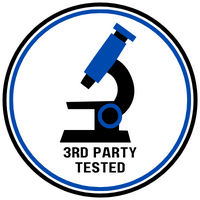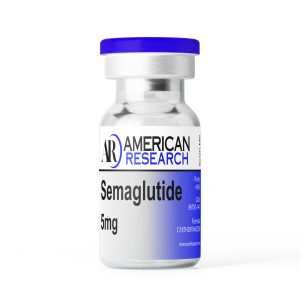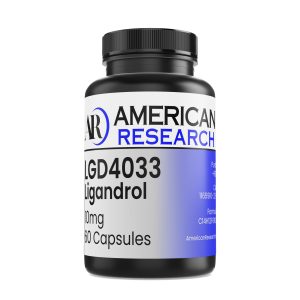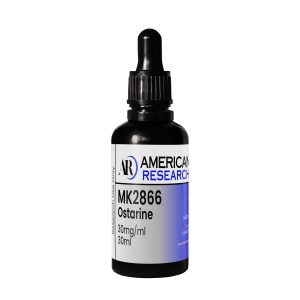Description






MK2866 (Ostarine) Liquid Properties
Liquid: 30mg/ml – 30ml
Application: Selective Androgen Receptor Modulator
CAS: 841205-47-8
Molar Mass: 389.33 g/mol
Chemical Formula: C19H14F3N3O3
Synonyms: Enobosarm, GTx-024
MK-2866 (GTx-024) is a selective androgen receptor modulator (SARM) with Ki of 3.8 nM, and is tissue-selective for anabolic organs.
Peer-Reviewed Studies
Sex-specific cytotoxicity of ostarine in cardiomyocytes
Abstract
Ostarine is the most popular compound in the selective androgen receptor modulator group (SARMs). Ostarine is used as a physical performance-enhancing agent. The abuse of this agent in higher doses may lead to severe side effects. Here, we evaluate the effects of ostarine on the heart. We utilized a cardiomyocyte H9C2 cell line, isolated primary female and male cardiac fibroblast cells, as well as hearts obtained from rats. Ostarine increased the accumulation of two fibrosis protein markers, αSMA and fibronectin (p < 00.1) in male, but not in female fibroblast cells. Ostarine increased the expression of the cardiomyopathy marker βMhc in the H9C2 cell line (p < 0.05) and in the heart in rats (p < 0.01). The unfavorable changes were observed at high ostarine doses. Moreover, a decrease in viability and an increase in cytotoxicity marker LDH were observed already at lowest dose (1 nmoL/l). Taken together, our results suggest that ostarine is cardiotoxic which may be more relevant in males than in females.
Abstract
Musculoskeletal pathologies such as sarcopenia and cachexia are increasingly prevalent within an aging global society. Musculoskeletal wasting is not limited to age and is increasingly recognized in the pathogenesis of multiple chronic diseases, including cardiometabolic disorders, such as insulin resistance and type 2 diabetes. Naturally, efforts to promote the maintenance of, if not increase in, lean mass could yield protective, disease-delaying benefits. Selective androgen receptor modulators (SARMs) have been available for several years and have recently been studied as a treatment for muscle wasting. Considering how little is known regarding the effects of SARMS on muscle mitochondrial function, and in light of the relevance of mitochondria on muscle cell dynamics, we sought to determine the specific effects of MK-2866 on muscle cell mitochondrial function. Following incubation of murine muscle cells with MK-2866, we found that mitochondrial ATP production was significantly increased, while mitochondrial respiration significantly decreased. Moreover, this same treatment regimen yielded a significant increase in muscle cell proliferation and protein synthesis. Future work will reveal the degree to which the mitochondrial changes from MK-2866 are necessary for muscle cell proliferation and protein anabolism.
Abstract
Ostarine, also known as MK-2866 or enobosarm, is a selective androgen receptor modulator (SARM). It has anabolic properties and as such is widely used in doping, accounting in 2021 for 25 % of the adverse analytical findings (AAF) among the class S1.2 “Other anabolic agents” of products banned by the World Anti-Doping Agency, to which it belongs. But in some cases, it can be responsible for an AAF following contamination. We report the case of an athlete who contaminated herself by exchanging body fluids while kissing her boyfriend, who took 25 mg per day of MK-2866 for 9 days prior to the athlete’s AAF (urinary concentration evaluated at 13 ng/mL) without her knowledge. Both subjects came to our lab for hair testing. The athlete’s hair was black and slightly frizzy. Six segments of 2 cm then 7 × 3 cm (33 cm) were analysed and showed increasing concentrations, from 2 pg/mg on the first segment to 17.8 pg/mg on the last segment. The boyfriend’s hair, light-brown, analyzed on 4 × 2 cm, also showed increasing values, from 65 to 143 pg/mg. These gradients of concentration in the hair’s athlete and in her boyfriend were compatible with external contamination of the hair, confirmed by analysis of washing baths, pillowcases (150 pg on each), and the athlete’s hairbrush (250 pg).
Fingernails were also contaminated, with 21 pg/mg in the athlete and 1041 pg/mg in the boyfriend, with highly contaminated washing baths, and toenails were less contaminated, with 2 pg/mg in the athlete and 17.3 pg/mg in the boyfriend. Urine samples taken 35 days after the start of MK-2866 treatment showed a value of 3690 ng/mL in the boyfriend and 5.7 ng/mL in the athlete. After 6 days off, these concentrations were 3.3 ng/mL and 0.1 ng/mL, respectively. A controlled transfer study was carried out 12 days after discontinuation (urine concentrations returned to negative level). After administration of 17 mg (the 25 mg/mL vial having been controlled at 17 mg/mL), urine samples were taken from the boyfriend and the athlete (n = 10 for each) for more than 25 h after they had been living normally with each other (regular kissing in particular). The boyfriend’s urine concentrations ranged from 681 ng/mL to 12822 ng/mL (Tmax = 8:30 hrs), and the athlete’s from 0.3 ng/mL to 13 ng/mL with Tmax = 8:30 hrs, i.e. at 22:30 hrs, which corresponded exactly to the time of collection of the urine that showed AAF, with a similar concentration. The dose ingested by the athlete was estimated at 15 µg. These results demonstrate the transfer of ostarine via body fluids between two subjects, with a high risk of AAF in one athlete, as observed in our case.
By purchasing from AMERICAN RESEARCH, you agree that you are purchasing Research Chemicals. AMERICAN RESEARCH products are furnished for LABORATORY RESEARCH USE ONLY.
This product should only be handled by qualified and licensed professionals. The product may not be used as a drug, agricultural or pesticide product, food additive, or household chemical – and may not be misbranded as such. All information on this website is available for educational purposes only. Bodily introduction of any kind into humans and/or animals is strictly forbidden by law.
*Research chemicals are chemical substances used by scientists for medical and scientific research purposes. One characteristic of a research chemical is that it is for laboratory research use only; a research chemical is not intended for human or veterinary use. This distinction is required on the labels of research chemicals and is what exempts them from regulation under parts 100-740 in Title 21 of the Code of Federal Regulations (21CFR).
ALL ARTICLES AND PRODUCT INFORMATION PROVIDED ON THIS WEBSITE ARE FOR INFORMATIONAL AND EDUCATIONAL PURPOSES ONLY.
The products offered on this website are furnished for in-vitro studies only. In-vitro studies (Latin: “in glass”) are performed outside the body. These products are not medicines or drugs and have not been approved by the FDA to prevent, treat and/or cure any medical condition, ailment or disease. Bodily introduction of any kind into animals or human is strictly prohibited by law.








